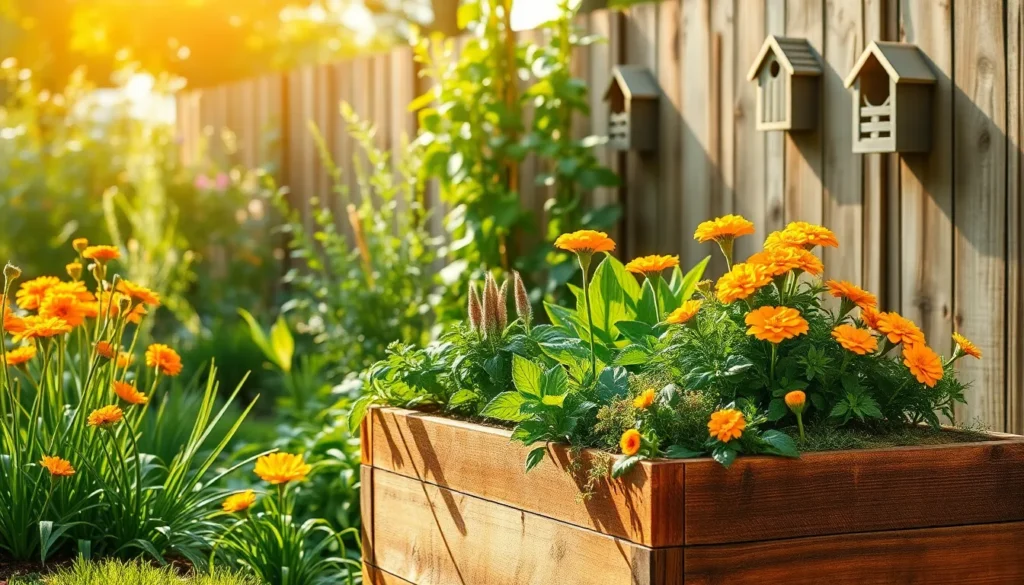In the vibrant tapestry of gardening, where every leaf and blossom tells a story, the challenge of managing pests is a common thread that unites us all. Whether you’re just beginning your green journey or you’ve already cultivated a thriving sanctuary, understanding eco-friendly pest control is essential for maintaining a healthy, sustainable garden. As gardeners, we cherish the delicate balance of nature, seeking methods that protect our beloved plants without harming the environment. Embracing eco-friendly pest control not only preserves this balance but also enhances the beauty and vitality of our gardens.
Imagine strolling through your garden, a haven where every creature plays its part in a harmonious ecosystem. In our article “7 Beautiful Eco-Friendly Pest Control,” we will guide you through practical, creative solutions that minimize harm to beneficial insects while effectively managing pests. You’ll discover natural allies in the form of companion planting and learn how to harness the power of beneficial insects. We’ll also explore innovative techniques and homemade remedies that keep your garden flourishing.
This article is designed to inspire and equip gardeners of all levels with actionable, sustainable strategies. By choosing eco-friendly pest control, you contribute to a healthier planet and a more resilient garden. Join us as we embark on this journey towards a greener, more beautiful world—one garden at a time. Let’s delve into these seven stunningly simple solutions that promise to transform the way you nurture your garden, ensuring it remains a sanctuary for both plants and wildlife alike.
Understanding Eco-Friendly Pest Control
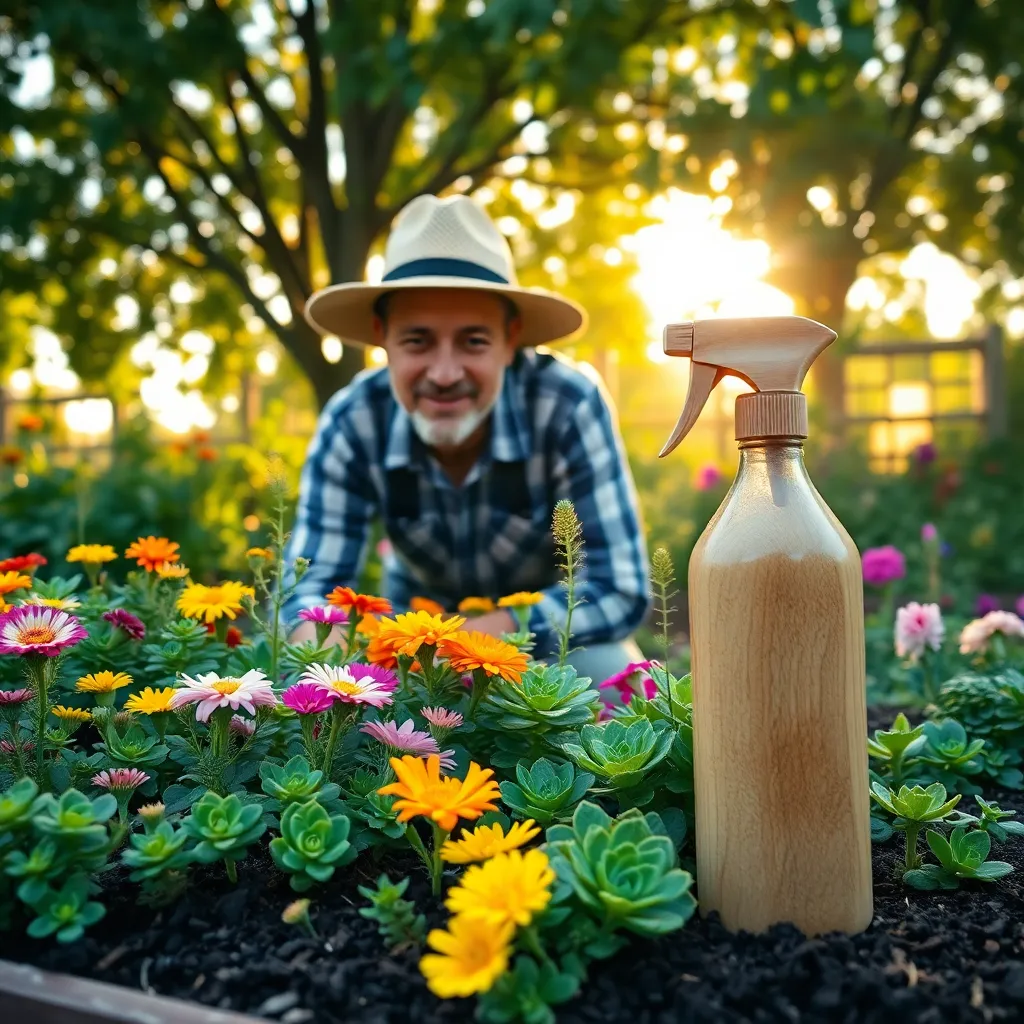
Eco-friendly pest control is a vital component of sustainable gardening, ensuring that your plants remain healthy without harming the environment. By embracing natural methods, gardeners can keep pests at bay while maintaining the integrity of their ecosystems.
One effective approach is to use companion planting, which involves growing certain plants together to naturally repel pests. For example, planting marigolds alongside tomatoes can deter nematodes and other harmful insects.
Another strategy is to encourage beneficial insects, such as ladybugs and lacewings, which prey on common garden pests like aphids. Creating a diverse garden with a variety of native plants can attract these helpful allies, reducing the need for chemical interventions.
For those dealing with specific pest issues, homemade sprays using ingredients like garlic, neem oil, or hot pepper can offer a natural solution. These sprays should be applied in the early morning or late afternoon to avoid harming beneficial insects that are more active during the day.
Beneficial Insects: Nature’s Helpers
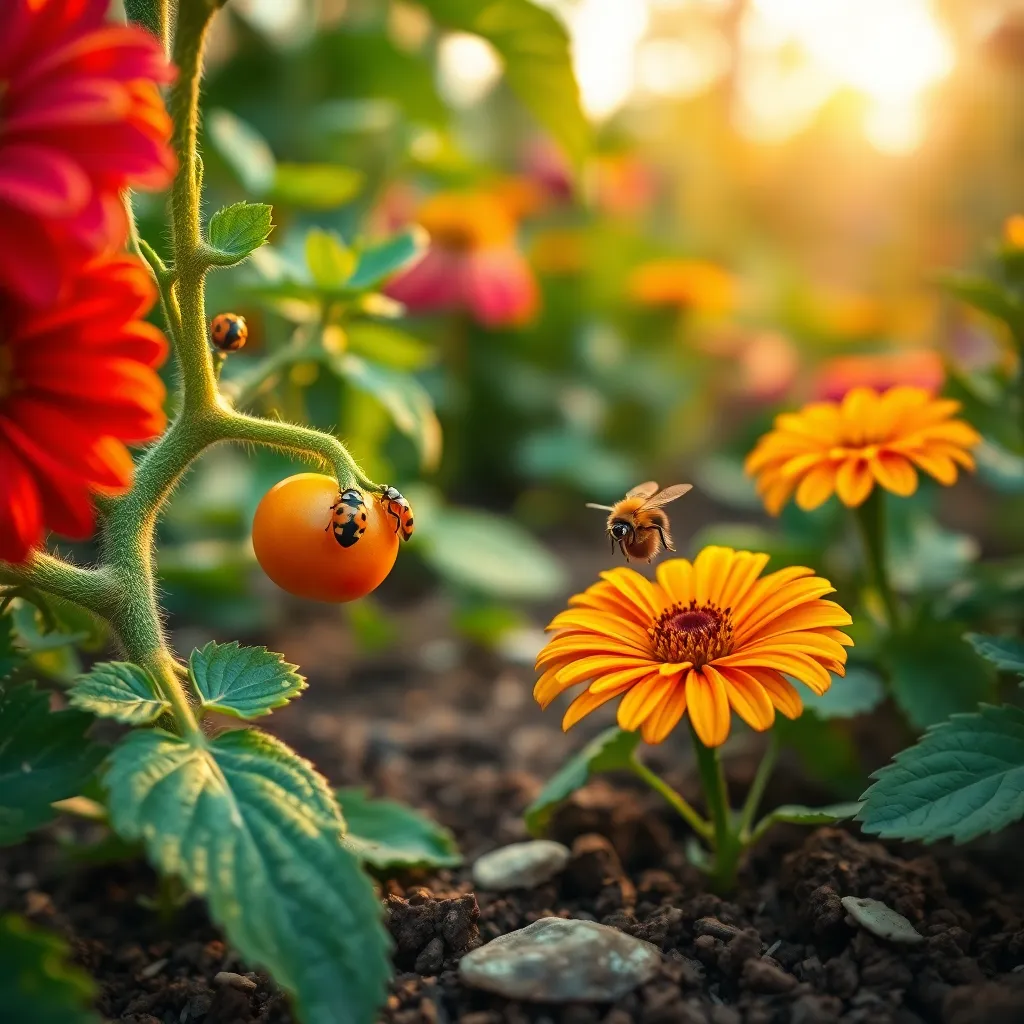
Incorporating beneficial insects into your garden is a practical way to manage pests naturally. These insects, like ladybugs and lacewings, are voracious predators of common garden pests such as aphids and caterpillars.
Attracting beneficial insects requires creating a habitat that provides food, water, and shelter. Planting a diverse range of flowering plants, such as dill, fennel, and yarrow, will offer nectar and pollen, which are essential for many beneficial insects.
Consider using companion planting techniques to enhance your garden’s ecosystem. For example, marigolds not only deter nematodes but also attract pollinators and beneficial insects, creating a balanced environment.
Advanced gardeners can implement a perennial insectary border around their garden. This involves planting perennials that bloom at different times to ensure a continuous food supply for beneficial insects throughout the growing season.
Regularly monitor your garden to assess the effectiveness of beneficial insects in controlling pests. By observing which plants attract the most helpers, you can adjust your planting strategy to maintain a healthy, pest-resistant garden.
Companion Planting for Pest Reduction
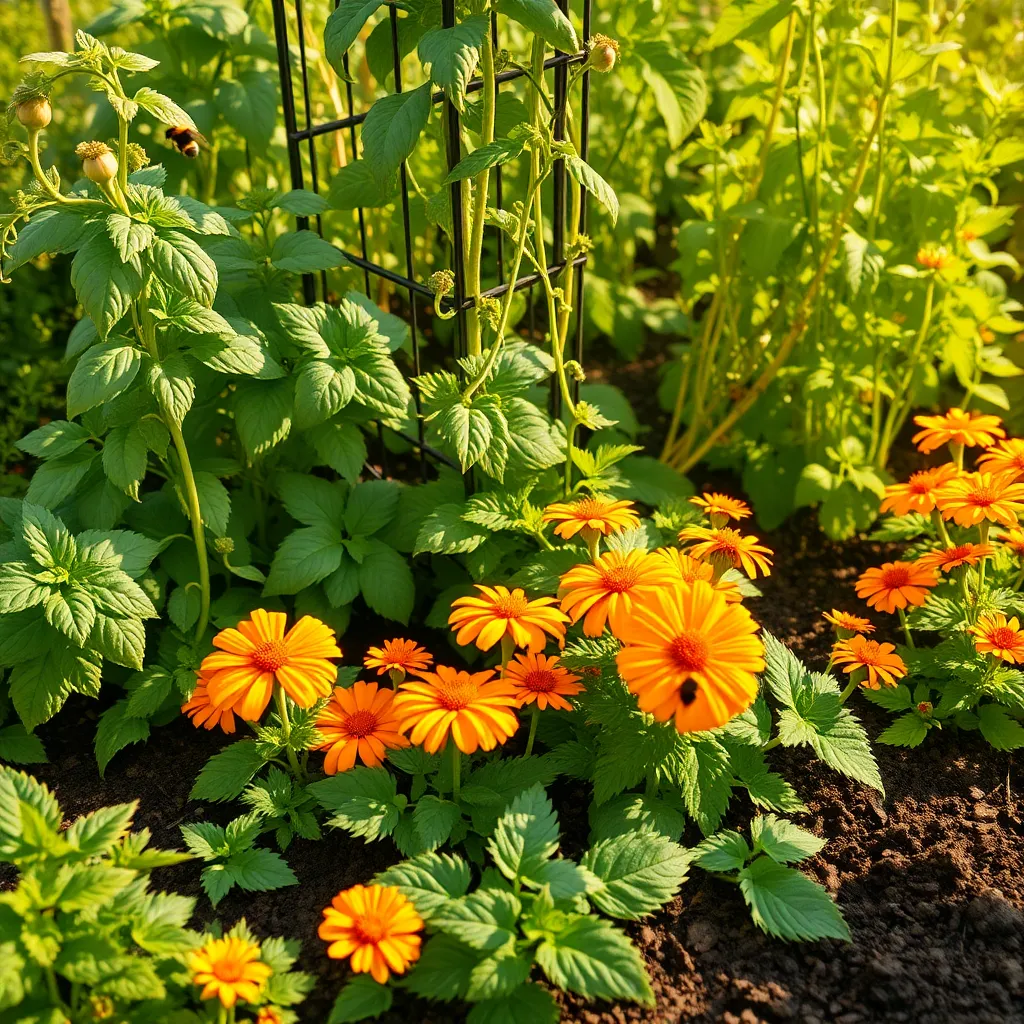
Companion planting is a natural and effective way to reduce pests in your garden by using the natural properties of plants. By strategically placing certain plants together, you can create a more harmonious and balanced ecosystem that discourages pest infestations.
Marigolds are well-known for their ability to repel nematodes and other garden pests like aphids. Planting marigolds alongside tomatoes or cucumbers not only adds a splash of color but also provides a protective barrier against these unwanted insects.
Incorporating basil in your garden can help keep mosquitoes and flies at bay, especially when planted near tomatoes and peppers. Basil thrives in well-drained soil and requires regular watering, making it an easy addition to most vegetable gardens.
For those looking for more advanced companion planting techniques, consider using the “three sisters” method of planting corn, beans, and squash together. This traditional combination allows the corn to provide a natural trellis for the beans, while the squash’s large leaves shade the soil and help conserve moisture.
Homemade Natural Pest Repellents
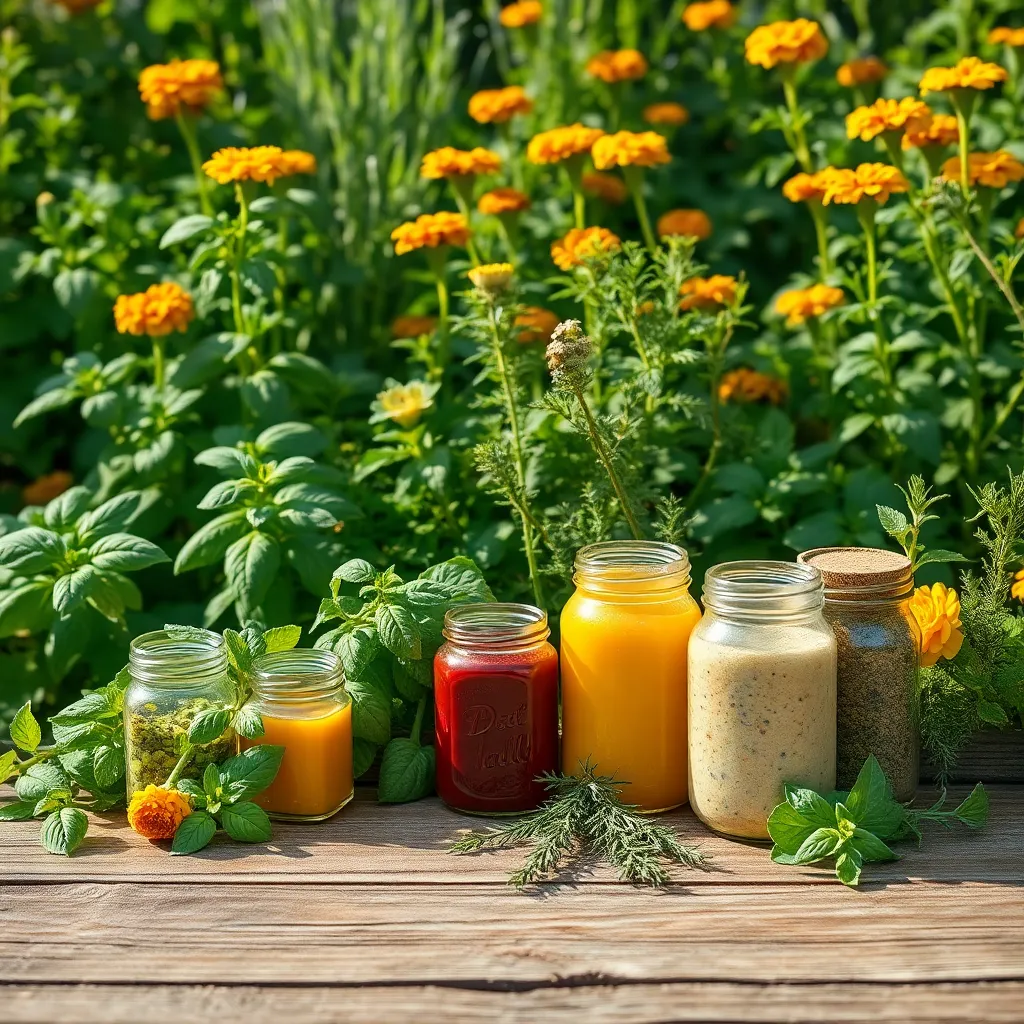
Homemade natural pest repellents offer a sustainable way to protect your garden without harming the environment. These solutions are both budget-friendly and easy to make, utilizing ingredients you likely already have at home.
A simple but effective repellent can be made using garlic, a natural insect deterrent. Crush a few cloves, mix them with water, and allow the mixture to sit overnight for maximum potency.
Another powerful homemade remedy involves mixing chili peppers with water and a few drops of dish soap. This concoction can deter many pests, including aphids and spider mites, when sprayed onto plant leaves.
For gardeners looking for a milder option, neem oil is a great choice. Dilute the oil with water and a bit of mild soap, then spray it on affected plants to disrupt insect breeding cycles.
Incorporating Physical Barriers

Incorporating physical barriers into your garden can be an effective way to protect your plants from pests without harming the environment. These barriers act as a first line of defense, preventing pests from reaching your plants and reducing the need for chemical interventions.
One of the simplest barriers you can use is row covers, which are lightweight fabrics that shield plants while allowing sunlight and rain to penetrate. Row covers work well for vegetables like cabbages and lettuce by protecting them from insects like cabbage worms and aphids.
For gardeners dealing with burrowing pests such as moles and voles, installing underground mesh or wire barriers can be a game-changer. By burying a galvanized wire mesh at least 6 inches deep around the perimeter of your garden, you can deter these pests from damaging your root systems.
Employing a basic mulch layer can also serve as a physical barrier by suppressing weed growth and minimizing soil-borne diseases. Use organic mulches like straw or bark, which biodegrade over time and enrich the soil, making them both practical and environmentally friendly.
Using Organic Pest Sprays

Organic pest sprays offer a natural solution to keep your garden healthy without harmful chemicals. Neem oil is one popular option that effectively targets a variety of pests while being safe for beneficial insects when applied correctly.
For best results, apply neem oil in the evening or early morning to avoid direct sunlight, which can scorch plants. Mix two tablespoons of neem oil with a gallon of water and add a few drops of dish soap to help the solution adhere to plant leaves.
Another effective organic spray is a homemade garlic and chili pepper solution. To make it, blend two bulbs of garlic and a tablespoon of chili powder with a liter of water, strain, and mix in a few drops of liquid soap.
This garlic and chili spray can deter a range of pests, including aphids and spider mites. Spray it on affected areas every few days until pests are under control, ensuring to cover both the tops and undersides of leaves.
For those dealing with fungal issues, a simple baking soda solution might come in handy. Mix one tablespoon of baking soda with a gallon of water and add a teaspoon of horticultural oil, which can help in controlling powdery mildew on plants.
Monitoring and Maintenance Techniques
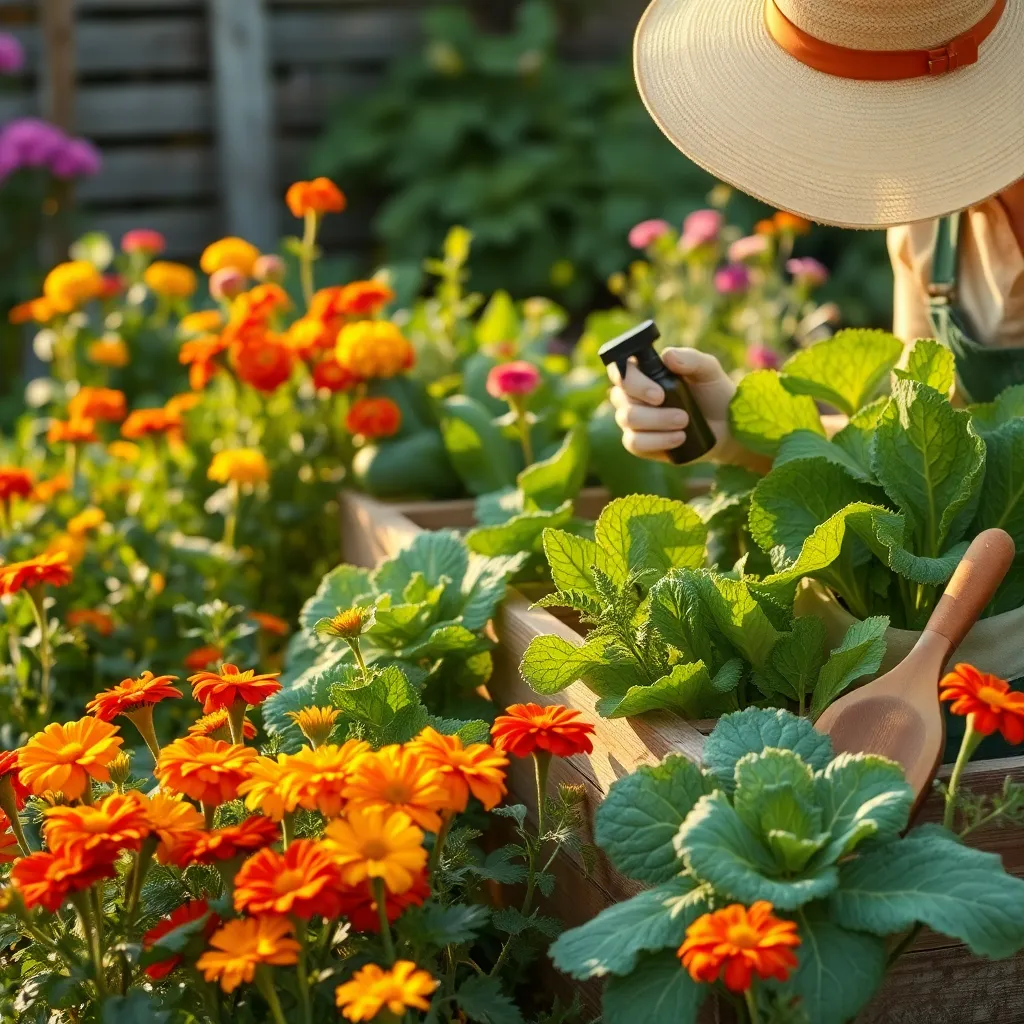
Regularly inspecting your garden for pests is essential for maintaining healthy plants. Check leaves, stems, and soil for any signs of infestation, such as holes, discoloration, or webbing.
Use a magnifying glass to examine areas that are difficult to see with the naked eye. This is especially useful for spotting tiny pests like aphids or spider mites that can cause significant damage.
Consistency is key when it comes to monitoring. Set a routine to walk through your garden every week, ensuring you catch any potential problems early.
For those with larger gardens, consider keeping a gardening journal to track pest patterns and plant health. This can help identify recurring issues and inform future planting decisions.
Maintaining a balanced ecosystem can naturally deter pests. Encourage beneficial insects like ladybugs and lacewings, which prey on common garden pests.
Implement crop rotation and companion planting to reduce pest buildup. Rotating crops disrupts pest life cycles, while companion planting can naturally repel or confuse pests.
Advanced gardeners might explore using pheromone traps to monitor and control pest populations. These traps can be particularly effective against moths and other flying insects.
Conclusion: Growing Success with These Plants
In our journey through the ‘7 Beautiful Eco-Friendly Pest Control’ for relationships, we’ve uncovered the secrets to nurturing love with care and intention. By fostering open communication, setting healthy boundaries, practicing empathy, and embracing patience, we create a foundation of trust and respect. We also explored the importance of conflict resolution, the art of active listening, and the magic of quality time, all crucial in maintaining a flourishing relationship.
As your next step, take a moment today to implement one of these eco-friendly practices in your relationship. Whether it’s setting aside time for a heartfelt conversation or simply listening with full attention, small actions can lead to profound transformations.
Remember, relationships are like gardens that need nurturing to bloom. Bookmark this article as your go-to guide whenever you need a refresher on these nurturing practices. By doing so, you’re investing in the success of your relationship and ensuring a harmonious future.
Every relationship has the potential to thrive when we approach it with love and mindfulness. Let’s commit to these eco-friendly practices, and watch our connections grow stronger and more resilient than ever.

